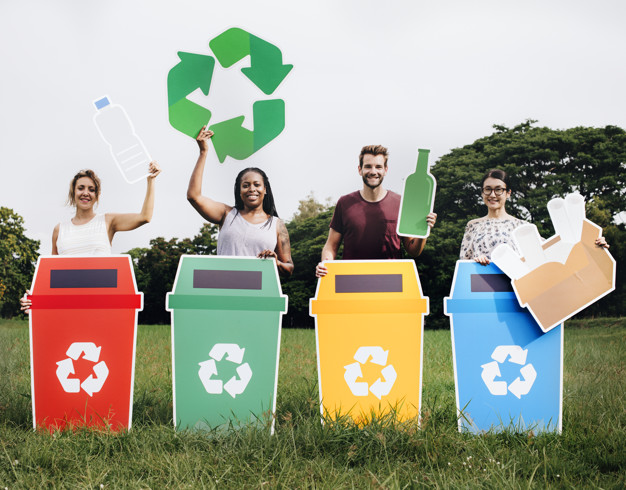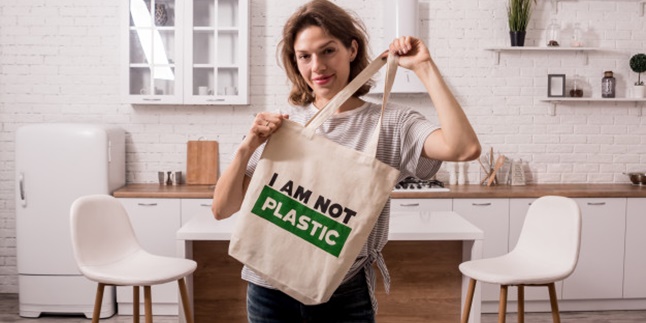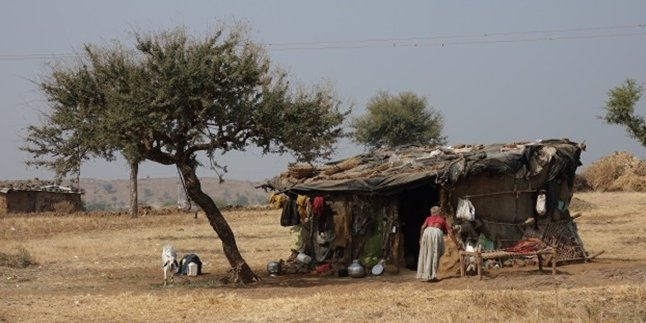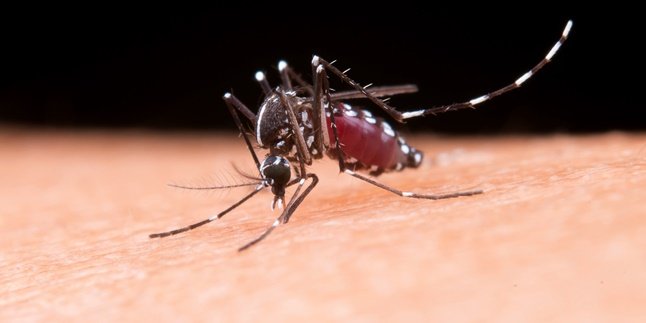Kapanlagi.com - Environmental sustainability is becoming an increasingly discussed issue. Issues regarding waste and pollution are also widely discussed. The concept of 3R is one solution to tackle the problem of accumulating waste. Reduce is one of the components of 3R, along with reuse and recycle. Unlike reuse and recycle, which are already quite popular, many still do not understand what reduce is?
The concept of 3R consists of reuse, recycle, and reduce. Reuse means using products or items that have been used before, so they don't just pile up as waste. Meanwhile, recycle means recycling or transforming used items into new products that can be used again. So, what about reduce?
Reduce is an effort to tackle the problem of accumulating waste by reducing the use of goods. Reduce is believed to be one step towards saving the environment. How is it explained? Find out in the following review, which is summarized from various sources.
1. Definition of Reduce

(credit: freepik)
As mentioned earlier, reduce is one of the three parts of the concept of 3R. Reduce is done by reducing the use of certain goods or products, so that the waste we produce will also decrease. When waste is reduced, the environment will be healthier and preserved.
In the midst of an increasingly advanced life, society is also becoming more consumptive without realizing it. As a result, the production of various daily goods or products is also increasing to meet high demand. The impact is that the waste generated every day is also increasing, threatening the sustainability of the environment.
Reduce is one way to deal with the problem of accumulating waste. Although not significant, taking reduce actions can have a positive impact on reducing daily waste production. Reduce can be done by limiting the use of certain items, such as clothes, accessories, paper, tissue, oil, medicine, masks, and many others.
2. Reduce Objectives
The implementation of the 3R concept to save the environment is certainly not without reason. The implementation of reuse, recycle, and reduce is an important step in preserving the environment. The objectives of implementing the 3R concept are as follows.
1. Efforts to preserve nature and the environment, as the impact of natural resources will also be better preserved.
2. Minimizing greenhouse gas emissions and other pollutants, as waste and waste are one of the triggers for emissions and pollution. Thus, the production of emissions and pollution will also be reduced by reducing waste.
3. Carbon dioxide emissions into the atmosphere can be reduced to avoid worsening the surrounding environment.
4. Reducing air, water, and soil pollution, as excessive use of goods will only become waste has been reduced.
5. Saving expenses by indirectly limiting shopping activities.
6. Able to create a sustainable future.
3. Reduce Actions Example

(credit: freepik)
Perhaps from the little reviews that have been presented, you already understand what reduce is. However, maybe you are still confused about what actions are classified as reduce. Here are some examples of reduce actions that you can do.
1. Choose to use products with recyclable packaging.
2. Avoid using products that generate a large amount of waste.
3. Use refillable products.
4. Maximize the use of electronic storage tools that can be erased and rewritten.
5. Reduce the use of disposable materials or items.
6. Use both sides of the paper when making photocopies.
7. Avoid purchasing and using unnecessary items.
4. Types of Hazardous Waste

(credit: freepik)
Before reducing, it is important to understand the types of waste. Because there are several types of waste that fall into the hazardous category. Waste in this category may be your priority in reducing. What are those wastes?
1. Battery Waste
Not many people know that batteries contain toxic chemicals such as mercury, nickel, and cadmium. Therefore, used batteries cannot be thrown away. Because the chemicals in the battery can dissolve into the soil or water system. It is advisable to take rechargeable batteries to the nearest local recycling center.
2. Electronic Waste
Broken electronic equipment often becomes accumulated waste. Just like batteries, used electronic waste also contains heavy metals that are harmful to the environment. So, it is best not to throw away electronic waste carelessly.
3. Light Bulb Waste
Besides being dangerous because it can cause injuries, light bulbs also contain mercury which is not good for the environment. So, take light bulb waste to the Household Hazardous Waste facility for recycling.
4. Medication Waste
Disposing of medications should also not be done carelessly, especially by flushing them down the toilet. Because the contents of drugs will dissolve and absorb into the soil. It is better to return the remaining drugs to the hospital to be handled properly.
5. Pesticide Waste
The next environmental hazard is the residue or remnants of pesticides, including chemical-based plant fertilizers and herbicides. These substances can threaten the balance of the ecosystem. It is advisable to take these types of chemicals to Household Hazardous Waste facilities.
Those are some explanations about how reducing can solve waste problems by reducing the use of certain products. Hopefully, it is useful, increases knowledge, and inspires you to take better care of the environment.
(kpl/psp)
Disclaimer: This translation from Bahasa Indonesia to English has been generated by Artificial Intelligence.














